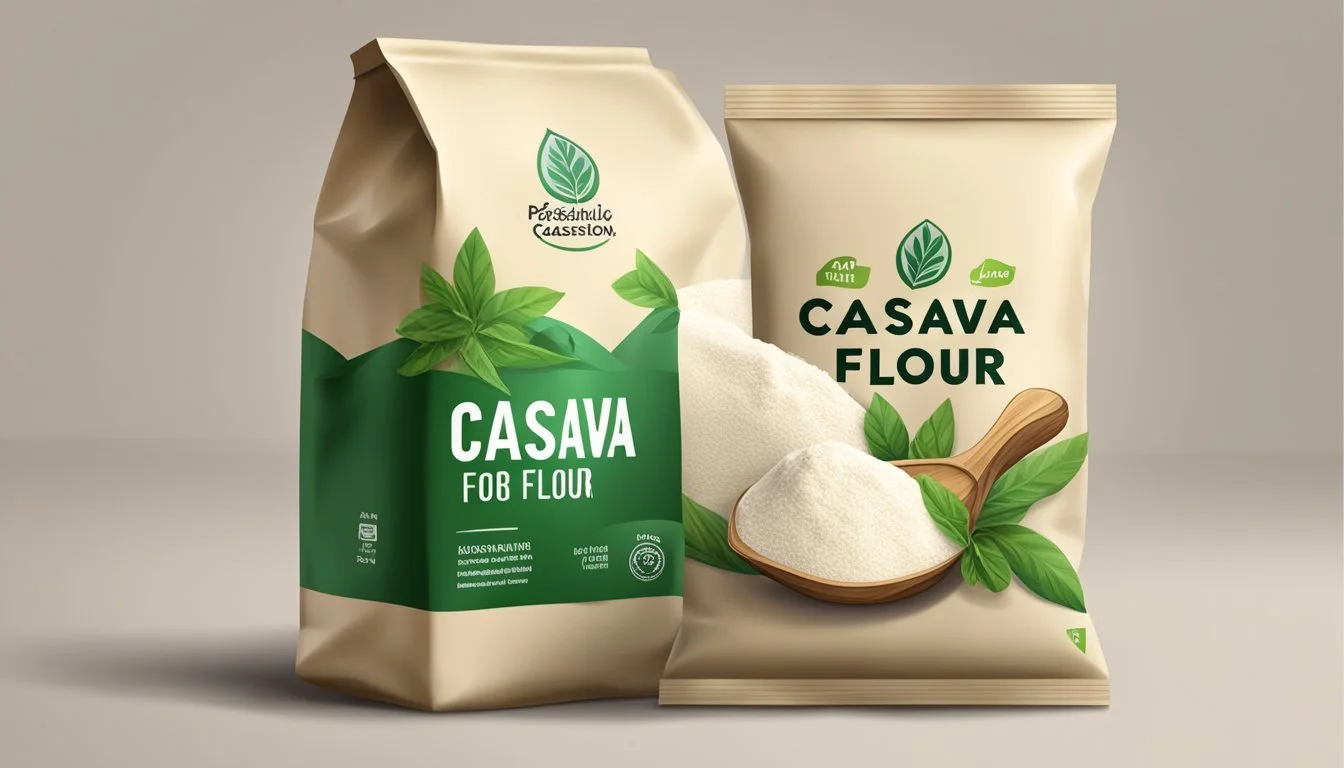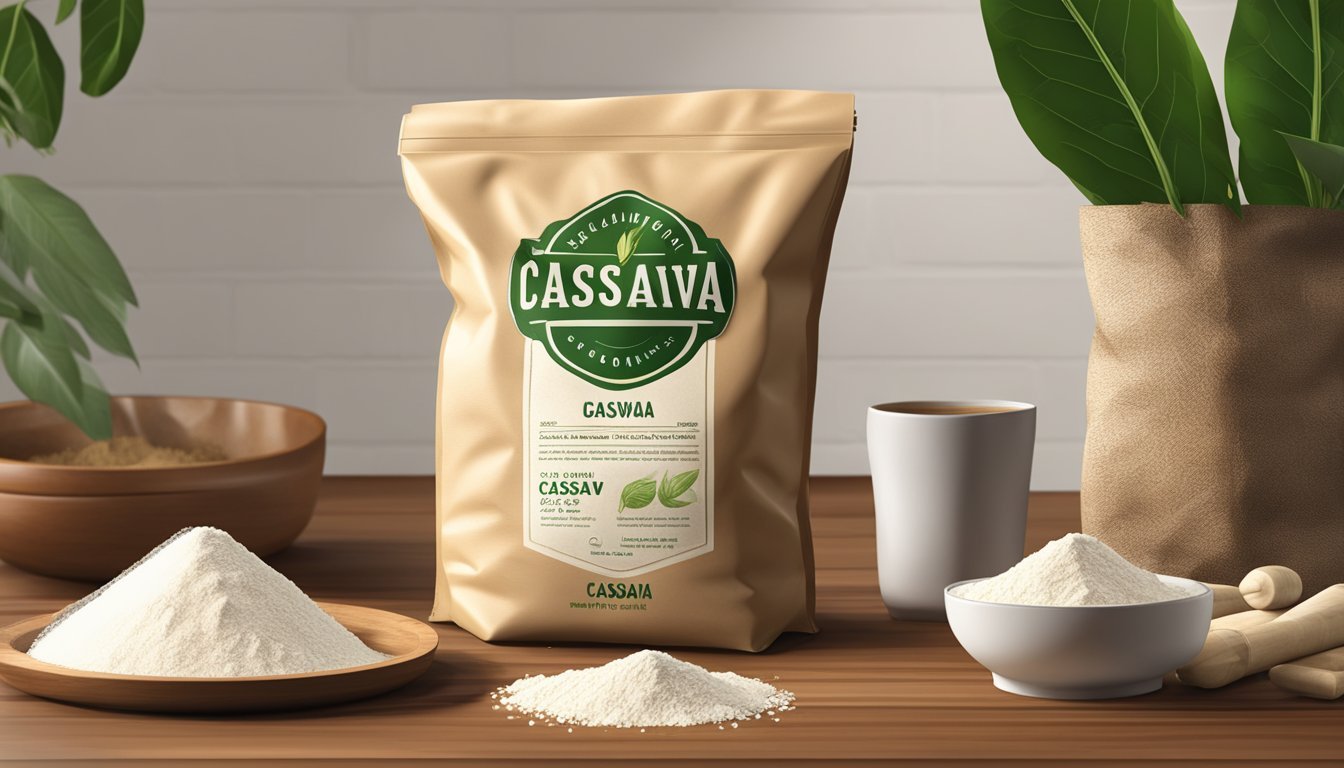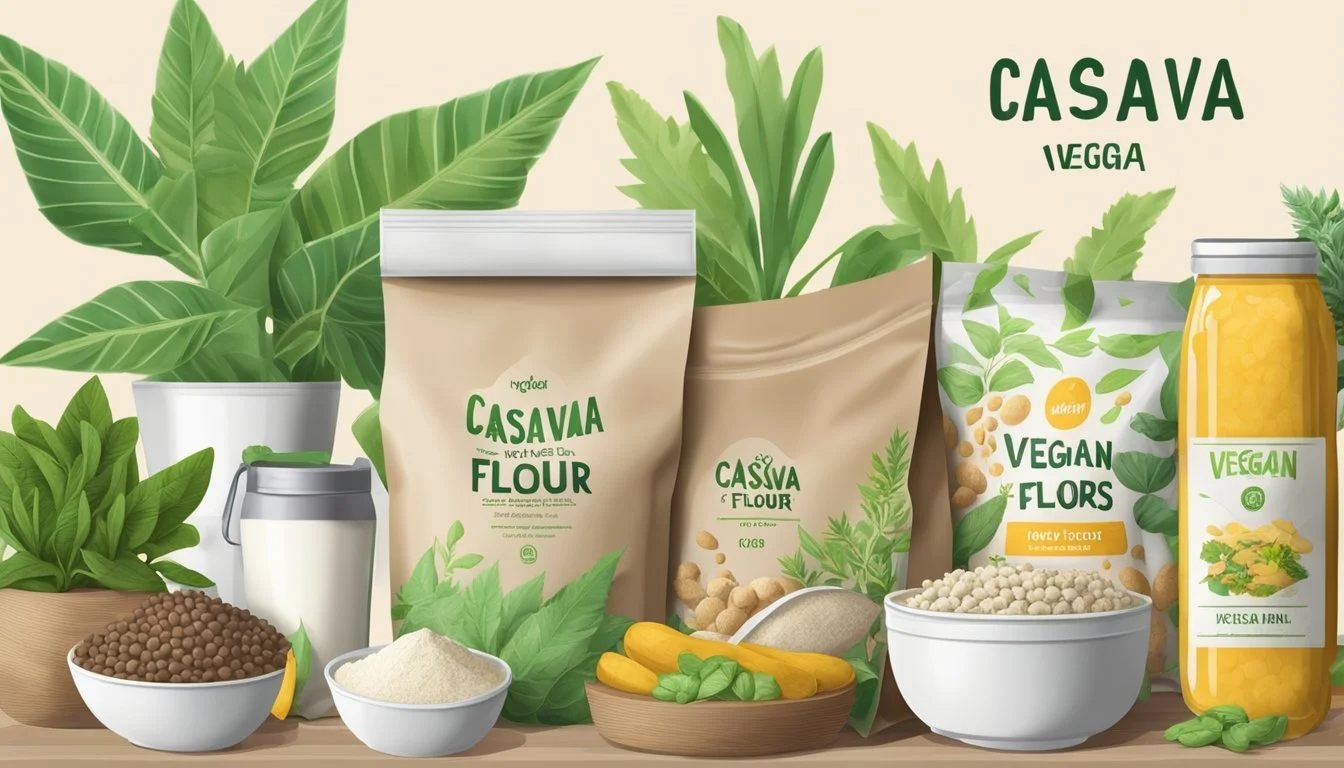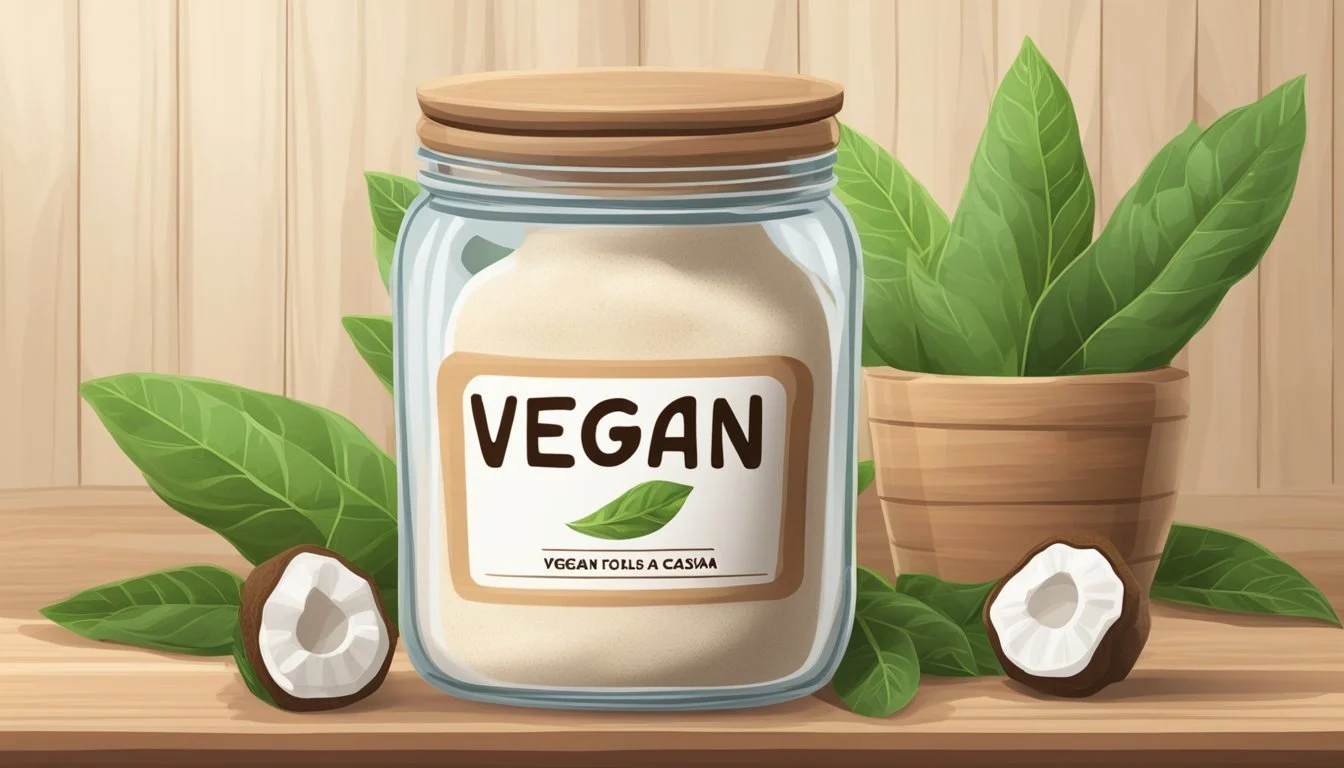Is Cassava Flour Vegan?
Uncovering the Facts About This Plant-Based Ingredient
Cassava flour is a popular alternative to wheat flour and other grain-based flours, prized for its gluten-free qualities and its versatility in cooking and baking. Originating from the cassava root, also known as yuca, this flour is inherently plant-based and thus aligns with a vegan diet. As an unprocessed product derived from a tuber, cassava flour carries the appeal of being a whole food ingredient, free from animal products or by-products, which makes it a staple in vegan kitchens.
Vegans can incorporate cassava flour into an array of recipes, from fluffy pancakes to chewy cookies, without compromise on ethics or flavor. The process of obtaining cassava flour involves peeling, drying, and grinding the cassava root, ensuring that the product remains unadulterated by animal derivatives. This seamless integration into vegan cooking is due in part to the flour's neutral taste and textural qualities that mimic those of traditional flour.
Moreover, the adaptability of cassava flour is evident from its ability to blend well with other vegan ingredients. Whether used to create a sturdy tortilla or as a thickening agent in soups and sauces, its properties allow it to perform similarly to conventional flours, making it an invaluable ingredient for those adhering to vegan dietary principles. The increasing popularity of cassava flour is indicative of a wider trend towards plant-based eating, as it meets the demand for ingredients that are both sustainable and animal-friendly.
What Is Cassava Flour?
Cassava flour is derived from the whole root of the cassava plant and is a popular alternative flour that is gluten-free, grain-free, and nut-free. This flour is known for its neutral flavor and versatility in baking and cooking.
Nutritional Profile of Cassava Flour
Cassava flour is a starchy, high-carbohydrate tuber, similar to yam or potato. It is rich in fiber and provides a source of potassium, with some varieties also offering calcium, iron, vitamin C, and vitamin A. However, it's important to note that due to its high starch content, it should be consumed in moderation within a balanced diet.
Cassava Flour Versus Tapioca Flour
While both cassava flour and tapioca flour come from the cassava plant, they differ significantly. Tapioca flour, also known as tapioca starch, is extracted from the starchy liquid of the cassava root, whereas cassava flour is made by grating and drying the whole root. This results in differing nutritional values and uses in the kitchen. Cassava flour retains more fiber and nutrients as it utilizes the entire root, while tapioca flour is almost pure starch. Consequently, cassava flour provides a different texture and is often preferred for baking because it yields a similar consistency to wheat flour, making it an excellent choice for those seeking a gluten-free option for their recipes.
Culinary Uses of Cassava Flour
In the culinary world, cassava flour has gained popularity for its gluten-free, grain-free, and nut-free properties, making it suitable for those with specific dietary needs. Its fine texture, neutral taste, and binding abilities make it a versatile choice for various recipes. It can be used to bake bread, cakes, and cookies, or as a thickener for sauces and soups. Additionally, it works well for making batters for fried foods (What wine goes well with fried foods?), serving as a side in the form of flatbreads, or as an ingredient in homemade pasta.
Vegan Diet Essentials
The vegan diet excludes all animal products, highlighting the importance of plant-based ingredients that can replicate traditional textures and flavors in baking. Essential items include vegan butter and other plant-based substitutes that maintain the integrity of beloved baked goods.
Defining Vegan-Friendly Foods
Vegan-friendly foods are those that contain no animal products or by-products whatsoever. This includes meat, dairy, eggs, and honey. Instead, vegans rely on a variety of plant-based ingredients such as:
Legumes: Lentils, beans, and soy products offer protein and substance.
Grains: Options like brown rice, oats, and quinoa serve as staples.
Nuts and Seeds: These are great for making dairy-free milks and butter.
Fruits and Vegetables: From sweet to sour, they are essential for nutrition and flavor.
Vegan Butter: Provides the fat necessary for baking, without using dairy.
Benefits of Cassava Flour in Vegan Baking
Cassava flour is a grain-free powder that is extracted from the root of the cassava plant. It is an excellent choice for vegan baking for several reasons:
Neutral Flavor: Cassava flour has a mild taste, making it a versatile ingredient that won’t overpower other flavors in a recipe.
Texture: It produces a desirable consistency and structure to baked goods, much like wheat flour, which is often sought after in vegan baking.
Allergen-Friendly: It is not only vegan but also free from common allergens, aligning with gluten-free and paleo diets, thereby expanding its suitability for various dietary preferences.
Cassava Flour Recipes
Cassava flour is a versatile ingredient often used in gluten-free and paleo cooking. Its neutral flavor and fine texture make it suitable for a wide range of dishes, from sweet to savory. Recipes using cassava flour can easily accommodate various dietary needs without compromising on taste or texture.
Basic Cassava Flour Recipes
One can start exploring cassava flour recipes with the basics, such as pancakes and muffins, which are staples in both sweet and savory versions.
Pancakes: They require a simple whisking of cassava flour, a leavening agent like baking powder, and a pinch of salt to maintain the structure. Liquid ingredients such as a milk alternative and a binding agent (like a flax egg for an oil-free version) are mixed separately before combining with the dry mix.
Prep: 10 min Bake: 2-3 min each side Recipe Card: - 1 cup cassava flour - 1 tsp baking powder - 1/4 tsp salt - 1 cup almond milk - 1 tbsp maple syrup - 1 tbsp oil or melted coconut oil (optional for non-oil-free) - Coconut oil for cooking (optional)Muffins: For muffins, cassava flour is often paired with ingredients like dairy-free yogurt and fruit essences for rich, moist treats. Baking times are generally longer than pancakes.
Prep: 15 min Bake: 20-25 min Recipe Card: - 1 1/2 cups cassava flour - 1/2 tsp baking powder - 1/4 cup dairy-free yogurt - 2 tsp lemon zest - 1 cup water or milk alternative - 1/2 cup sweetener of choice
Recipe Modifications for Dietary Restrictions
Cassava flour recipes are easily adaptable to various dietary restrictions without sacrificing flavor or texture.
Gluten-Free: Cassava flour is naturally gluten-free, making it an excellent base for those avoiding gluten.
Paleo: By using unrefined sweeteners and paleo-approved fats, cassava flour recipes can fully comply with paleo dietary guidelines.
Oil-Free: For recipes that traditionally include oil, such as cakes, one can substitute with unsweetened applesauce or increase the use of binding agents like flax or chia seeds to maintain moisture and cohesiveness.
A popular recipe modification is cassava flour tortillas, which can be made grain-free and with minimal ingredients, perfect for those with strict dietary boundaries.
Prep: 30 min
Cook: 5 min each
Recipe Card:
- 1 cup cassava flour
- 1/4 tsp salt
- 2 tbsp oil (omit for oil-free, add more water)
- 3/4 cup warm water (adjust as needed)By incorporating cassava flour into recipes, one can bake a variety of treats that cater to different needs, from gluten-free to grain-free and beyond. With a few tweaks, these recipes can serve as a delicious foundation in any specialized diet.
Preparing and Cooking with Cassava Flour
Cassava flour, a gluten-free alternative to traditional wheat flour, requires precise measuring and mixing for optimal results in vegan baking. Its unique properties can yield excellent results, from fluffy tortillas to crisp baked goods, when handled correctly in the kitchen.
How to Measure and Mix Cassava Flour
For consistent results, one should measure cassava flour using a dry measuring cup, leveling it off with a straight edge, such as the back of a knife. To prevent clumping and ensure a uniform texture, it's advisable to sift the flour into the mixing bowl before adding other dry ingredients.
Mixing should be done carefully. A spatula can be used to fold cassava flour into wet ingredients until just combined to avoid overworking the dough or batter, which can result in a dense product.
Aspect Tip Prep Time Varies by recipe, but generally minimal. Cook Time Depends on recipe specifics; check often. Kitchen Tool Sifter, dry measuring cups, spatula, mixing bowl.
Baking Techniques and Tips
When baking with cassava flour, preheating the oven is crucial for a consistent cooking environment. Baking powder or baking soda can be used to help products made with cassava flour to rise. However, one needs to ensure the correct amount is used to avoid altering the taste or texture of the final product.
After baking, it's important to let baked goods set and cool before serving to allow the texture to stabilize. Baking times and temperatures can vary, so one should remain vigilant, watching for the edges to become lightly golden as an indicator of doneness.
Process Consideration Preheat An essential step to reach the desired temperature. Rise/Set Products may rise differently than with wheat flour. Cool Let baked goods cool to improve texture.
The specifics of working with cassava flour, such as the correct balance of ingredients and the nuances of baking times, will become second nature with practice, leading to delectable and satisfying results in vegan baking.
Storing Cassava Flour
When storing cassava flour, one must consider both short-term convenience and long-term preservation to maintain its freshness and usability. Cassava flour should be kept away from moisture and air to extend its shelf life.
Short-Term Storage
For daily or frequent use, cassava flour should be stored in a cool, dry place such as a pantry or kitchen cabinet at room temperature. It is best to keep it in a tightly sealed container, which may be the original packaging if resealable, or a dedicated airtight container to protect it from humidity and other contaminants.
Location: Pantry or kitchen cabinet
Container: Airtight container or resealable original packaging
Temperature: Room temperature
Long-Term Storage Tips
Cassava flour can be stored in the refrigerator or freezer to extend its shelf life. In the refrigerator, the flour remains usable for up to two years. Storing it in the freezer can keep it fresh for the same duration of time. Use an airtight container or a freezer bag to prevent moisture from affecting the flour.
Refrigerator Storage:
Duration: Up to 2 years
Container: Airtight container or freezer bag
Freezer Storage:
Duration: Up to 2 years
Container: Airtight container or freezer bag
Additional Tip: Label the container with the date of storage to track how long it has been kept.
Addressing Common Questions
In the sphere of plant-based diets, cassava flour has emerged as a valuable resource. It presents a gluten-free, nut-free alternative that aligns well with vegan requirements. Here, we explore prevalent inquiries and consider ingredient substitutions pertinent to those with allergies.
Frequently Asked Questions About Cassava Flour
Is cassava flour vegan?
Yes, cassava flour is vegan. It is derived from the root of the cassava plant and contains no animal products or by-products.Can people with nut allergies use cassava flour?
Cassava flour is nut-free and a safe option for individuals with nut allergies.Does cassava flour contain gluten?
Cassava flour is naturally gluten-free, making it suitable for those with gluten intolerances or celiac disease.What are the nutritional benefits of cassava flour?
Cassava flour is high in carbohydrates and is a source of resistant starch. It's less nutrient-dense compared to other flours but can contribute to dietary fiber intake.
Substituting Ingredients for Allergies
For Egg Allergies:
One can mix flaxseed meal or chia seeds with water to create a vegan egg substitute suitable for use with cassava flour.For Dairy Allergies:
Dairy milk can be replaced with plant-based milks such as soy, almond, or oat milk, especially when recipes call for the creation of vegan buttermilk.
Using cassava flour can often be direct and doesn't typically require major adjustments in recipes designed for wheat flour. Its consistency and water absorption are similar, making it a versatile ingredient to have on hand for various dietary needs.
Creative Variations and Serving Ideas
Cassava flour offers a versatile foundation for both sweet and savory vegan dishes that cater to various taste preferences and dietary needs. Its neutral flavor and powdery texture make it ideal for a diverse range of recipes that are not only nutritious but also visually appealing, perfect for sharing on platforms like Instagram, Facebook, and Pinterest.
Sweet and Savory Variations
Sweet Variations:
Banana Cassava Muffins: They can add mashed bananas to the batter, which will naturally sweeten the muffins and give a moist texture. Incorporating cinnamon and a touch of maple syrup can enhance the flavors.
Berry Pancakes: For a burst of fruity tartness, they can fold fresh or frozen berries, such as blueberries, into the pancake batter. The berries offer a beautiful color and a juicy contrast to the fluffiness of the pancakes.
Savory Variations:
Herb-infused Tortillas: Adding finely chopped herbs like cilantro or rosemary into the tortilla dough can provide an aromatic element to the cassava flour tortillas, perfect for wraps or as a side.
Spiced Snacks: For a snackable option, small cassava flour crackers seasoned with paprika, garlic powder, and sea salt can offer a satisfying crunch with a spicy kick.
Serving and Presentation Tips
Breakfast and Brunch: A stack of cassava flour pancakes topped with a drizzle of maple syrup and a side of fresh berries makes a visually stunning and delicious meal. Serving them on a warm plate will keep them at the perfect temperature.
Dinner and Sides: For dinner, warm tortillas can be served alongside a variety of dips or as a base for tacos filled with grilled vegetables and beans, offering a nutritious and filling meal. They should be presented fresh off the griddle and kept covered until ready to serve to retain moisture.
Using these creative variations and serving suggestions, individuals can not only tailor cassava flour-based dishes to specific tastes and preferences but also present them in an appealing way that is sure to capture the attention of any audience, whether it's during mealtime or on social media.
Supplementary Information
In this section we explore cassava flour in relation to its nutritional profile compared to other flours, as well as its significance in various global cuisines.
Nutritional Comparisons with Other Flours
Cassava flour stands out nutritionally due to its carbohydrate content and is gluten, grain, and nut-free. Here's how it stacks up against coconut flour and almond flour:
Calories: On average, a 1/4 cup serving of cassava flour contains approximately 130 calories. Coconut flour is comparably lower in calories while almond flour is higher due to its fat content.
Carbohydrates: Cassava flour is predominantly made up of carbohydrates, tallying about 31 grams per serving. Coconut flour has fewer carbs, but is higher in fiber, whereas almond flour is lower in carbs and higher in fats.
Protein and Fats: Cassava flour contains negligible amounts of protein and fat. Coconut flour has a moderate amount of protein and almond flour is rich in proteins and healthy fats.
Fiber: Cassava flour provides around 2 grams of fiber per serving. Coconut flour is a fiber powerhouse, while almond flour offers less dietary fiber.
Cassava Flour’s Role in Global Cuisines
Cassava flour is a cornerstone in many South American, Asian, and African cuisines. It is derived from the cassava plant, known locally as yuca, and is utilized extensively due to its versatility.
South America: In South American culture, cassava flour is used to make traditional breads like arepas and also as a thickener in soups and stews.
Africa: In African cuisine, it's often used to prepare fufu, a staple dish that accompanies meat and vegetable sauces.
Asia: Asian cuisines deploy cassava flour in various desserts and even noodles.
Its role in these cuisines is not only due to its wide availability as a staple crop but also because it caters to dietary restrictions such as those necessary for a vegan lifestyle.
Conclusion
Cassava flour has confirmed its stance as a vegan-friendly ingredient suitable for various culinary applications. Boasting a gluten-free composition, this flour caters to those with gluten intolerances or celiac disease, without compromising on texture or flavor in baked goods.
Versatility: Cassava flour is an adaptable kitchen staple, transforming effortlessly into tortillas, pancakes, and an array of savory dishes.
Nutritional Profile: It provides a source of carbohydrates and dietary fiber, beneficial for energy provision and supporting digestive health.
Manufacturers typically produce cassava flour without animal products, aligning with vegan principles. However, individuals should peruse product labels for detailed information regarding potential cross-contamination or inclusion of genetically modified organisms (GMOs).
One should also consider sourcing practices, as ethical procurement aligns with the broader values often associated with veganism. Ensuring cassava flour is truly vegan-friendly encompasses both the absence of animal derivatives and mindful attention to its production process.








